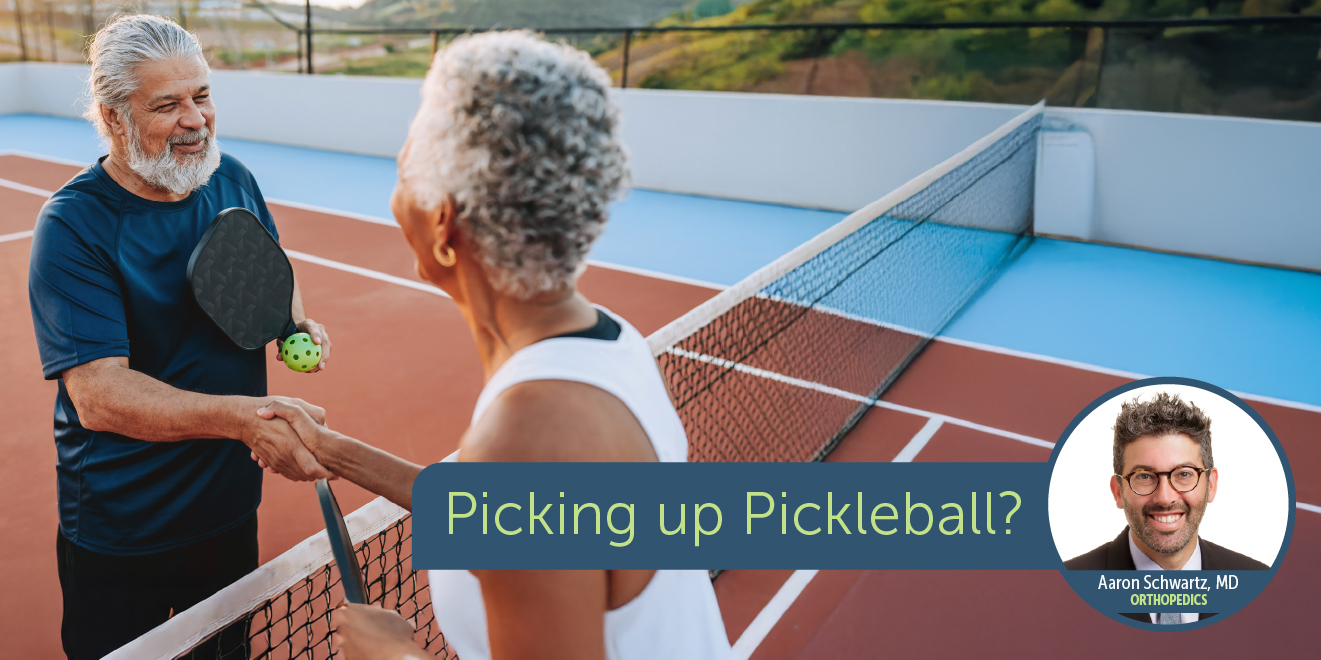
Pickleball is the fastest-growing sport in the U.S. with good reason. It’s social, easy to pick up, and a great workout for players of all ages. But as the courts fill up, we are seeing a spike in pickleball-related injuries at our orthopedics clinic in Portland, Oregon.
Whether you’re a weekend warrior or a seasoned paddle pro, it’s essential to know how to play smart and stay safe.
Why Are Pickleball Injuries Increasing?
As pickleball’s popularity surges, especially among older adults, injuries are increasing. The sport’s quick side to side lateral movements, stop-and-go bursts, and pivoting can put stress on joints, tendons, and muscles. Many players jump into a game without proper warm-up, footwear, or conditioning, which increases the risk of injury.
Common Pickleball Injuries We See
Pickleball Elbow (Lateral Epicondylitis):
Similar to tennis elbow, this overuse injury affects the tendons on the outside of the elbow. Repetitive swinging can strain these tendons, leading to pain and reduced grip strength.
Ankle Sprains:
Quick directional changes can cause players to roll an ankle, especially if they’re not wearing supportive court shoes.
Knee Injuries (Meniscus Tears, Ligament Tears, Patellar Tendonitis):
Sudden stops or twisting motions can stress the knees, particularly in those who already have arthritis or instability.
Shoulder Strains and Rotator Cuff Injuries:
Reaching for overhead shots or serving can aggravate the rotator cuff, especially if shoulder muscles aren’t properly conditioned.
Achilles Tendon Ruptures:
One of the more serious injuries, this typically happens during a sudden sprint or push-off and may require surgical repair.
Injury Prevention Tips for Pickleball Players
- Warm Up & Stretch: Spend 5–10 minutes getting your heart rate up and stretching key muscle groups before you play.
- Strengthen & Condition: Focus on lower body strength, core stability, and shoulder conditioning to support quick, reactive movements.
- Footwear Matters: Always wear supportive, non-slip court shoes. Running shoes don’t offer the lateral support needed.
- Technique & Training: Learn proper stroke mechanics to avoid overuse injuries. Consider lessons if you’re new to the sport!
- Rest & Recovery: Listen to your body! If you feel pain or discomfort, rest and seek medical advice early.
When to See an Orthopedic Specialist for a pickleball injury
- If you experience joint swelling, persistent pain, limited range of motion, or hear a “pop” during activity, it’s time to consult an orthopedic provider. Early diagnosis and treatment can prevent chronic issues and help you return to the court safely.
- Depending on the diagnosis, we may only need to prescribe physical therapy, rest, anti-inflammatories and ice. We may also offer a cortisone or platelet rich plasma (PRP) injection, or potentially surgery.
- Pickleball is a fantastic way to get and stay active, but like any sport, it comes with risks. With proper precautions, smart training, and prompt orthopedic care when needed, you can keep enjoying the game for years to come.
Dr. Schwartz is double board certified in Sports Medicine and Orthopedic Surgery and practices in Portland, Oregon.